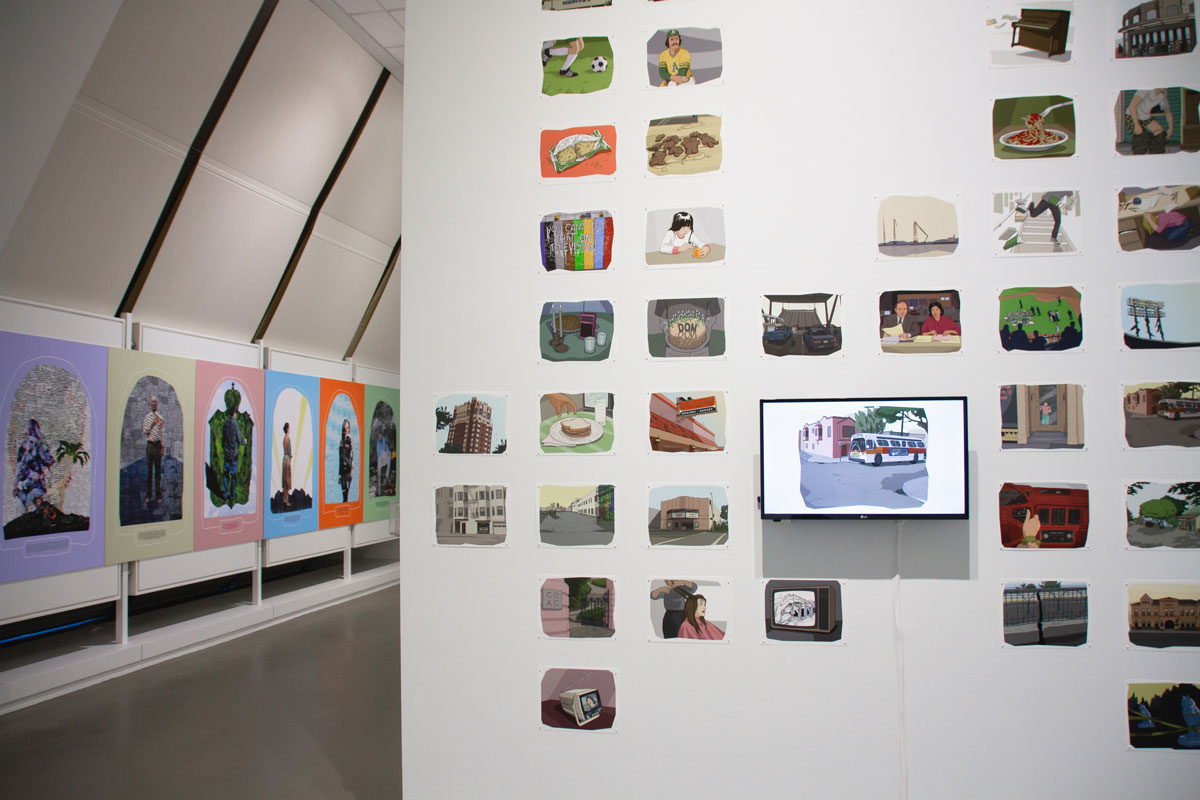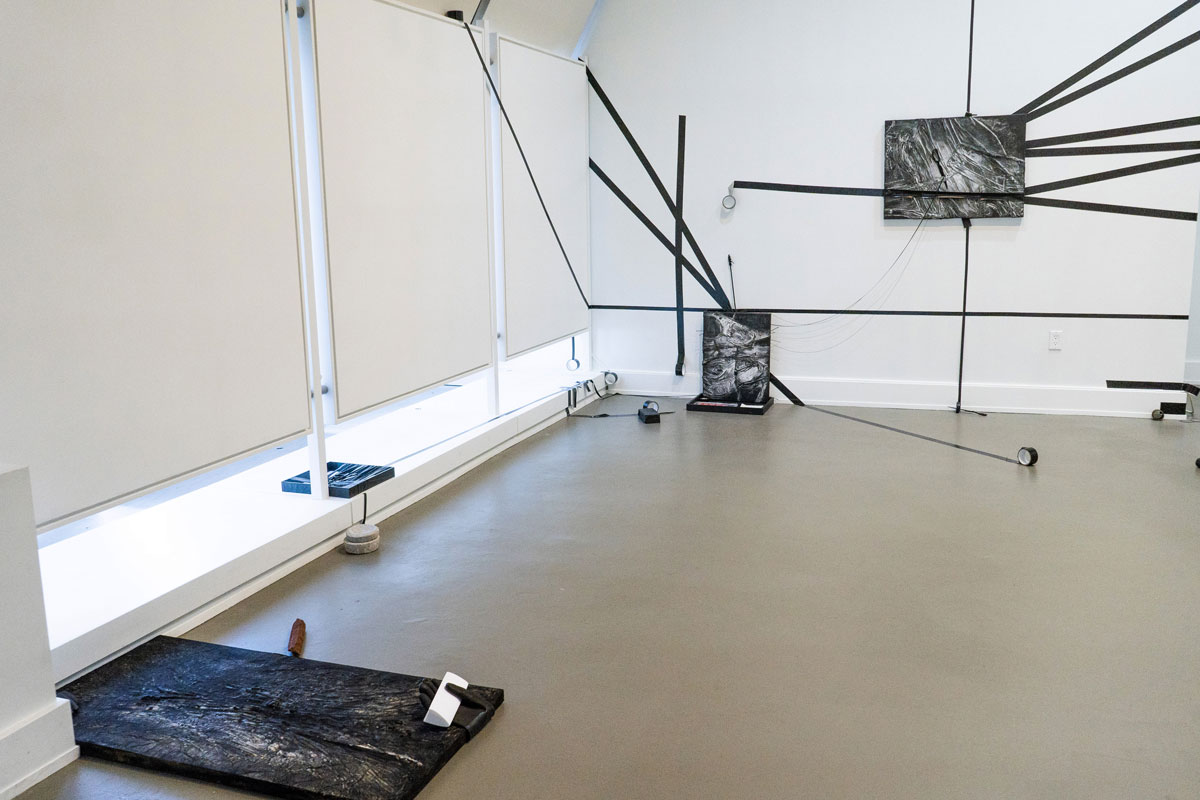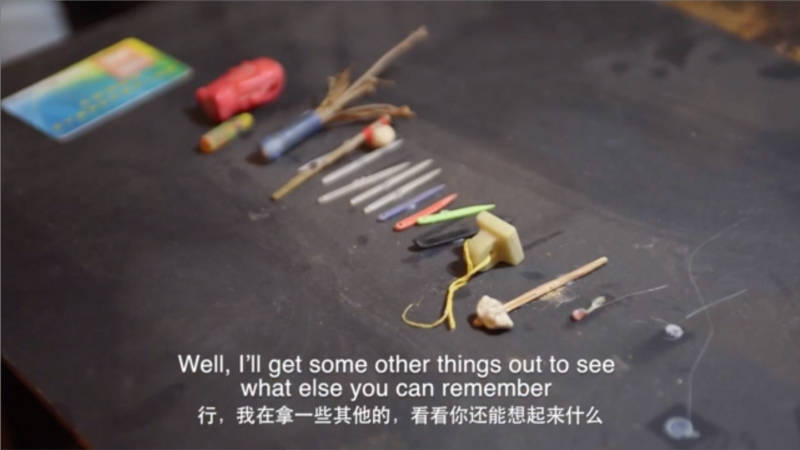1989 was a year of social and physical upheavals. That year, under persistent pressure from the African National Congress and other resistance groups, South Africa began to dismantle apartheid. In East Berlin, civilians began chipping away at the Berlin Wall ahead of its eventual fall. In the Bay Area, the Loma Prieta earthquake collapsed sections of the Bay Bridge and the Nimitz Freeway in one October afternoon. And on June 5, in Beijing’s Tiananmen Square, a man stood in front of a moving tank amidst ongoing student-led protests for democracy. Images of that man would circulate around the world, resonating as a symbol of courage in the face of brutal state power.

Some of us remember these and other events from that fated year through firsthand experience, but many more will encounter them through stories, images and objects derived from the original sites of memory. With 1989 as its temporal epicenter, Present Tense 2019: Task of Remembrance, a group exhibit at the Chinese Culture Center in San Francisco, contemplates memory through works that reflect on Loma Prieta, the Tiananmen Square demonstrations that turned into a massacre, and other memories of social and personal revolutions. A biennial now celebrating its tenth anniversary, Present Tense surveys contemporary issues with contributions by Chinese, Chinese diasporic and non-Chinese local artists.

This iteration of Present Tense begins with a poignant statement by curator Hoi Leung that announces the exhibit’s concern with the responsibility of remembering as well as the methods of maintaining memory. “Artistic production is imperative to the survival of stories and memories,” writes Leung. “Remembrance is a practice; the artists and organizations presented can challenge us to have a stake in the task to remember.”
Through mediums including sculpture, experimental film and manifestos from social movements, 15 remembrances reckon with memory’s possibilities and its shortcomings. In Memory of a Gardener and Guardian, a short film by artist Xu Tan, Chang Jok Lee, a San Francisco housing equity activist, walks around the garden she built as she lovingly recalls its seasons of blooms and hardships, a parallel for both the community she has cultivated and her own garden of memories.

In The Vanished Exhibition, another short film, artist Wu Yuren speaks to a former fellow inmate about an art exhibition he held over the course of ten months while imprisoned in Beijing’s Chaoyang Detention House. As the two men look at the miniature objects that comprised the show in Yuren’s cell, they reminisce in detail about their surreptitious smoking habits, but realize they’ve also forgotten much from their time in detention.
Memory, of course, isn’t free of gaps. And it’s these gaps that make the chase of memory enticing.
Task of Remembrance again broaches forgetting with Stella Zhang’s Sealed Memory installation. As a student at Beijing’s Central Academy of Fine Arts in 1989, Zhang recalls walking through Tiananmen Square to assemblies that turned violent and tragic. Out of a suitcase of sealed memories, black tape spills onto the gallery’s floors and stretches to the walls, where pieces of clothing are plastered and nailed onto dark canvases. Zhang’s installation, a tangled web of memories bursting out of a formerly sealed suitcase, reminds us that forgetting can be voluntary but remembering isn’t always so.

Today, the task of remembering—and forgetting—is further complicated by our acquiescence to digital technology’s promise of being a proxy for our memory bank. Though we have more technologies than ever to capture moments and store them away, it’s unclear if they make the task of remembrance any easier. From our screens, we bear witness to more global events than any past generation. But have our memories dissolved in this deluge? And with digital sources vulnerable to distortion, will our memories sit in conflict with each other?
While thoughtfully proposing artists as archivists of civic memory, Task of Remembrance also inspires all visitors to examine the design of their own memories. By resisting passive consumption, we could choose instead a more considered approach to memory making. The 30 years since 1989 hold numerous upheavals and revolutions that evince and challenge humanity’s desire for progress and freedom. Walking away from the works Leung has assembled, it’s natural to wonder what our memories will be from the crucial moments that have passed and those still yet to come.

‘Present Tense 2019: Task of Remembrance’ is on view at the Chinese Culture Center in San Francisco through Dec. 21. Details here.


